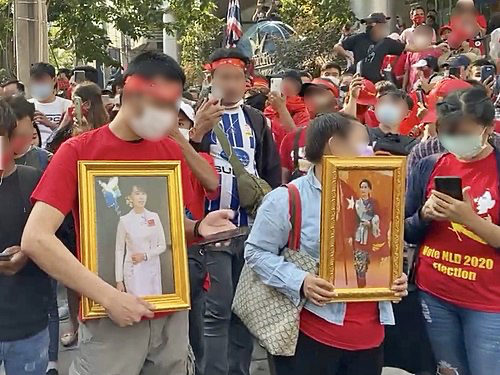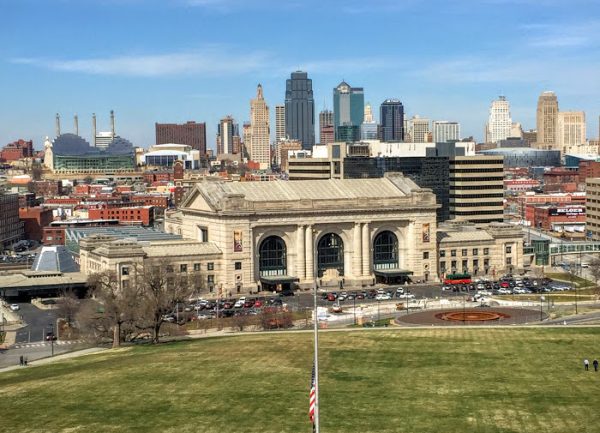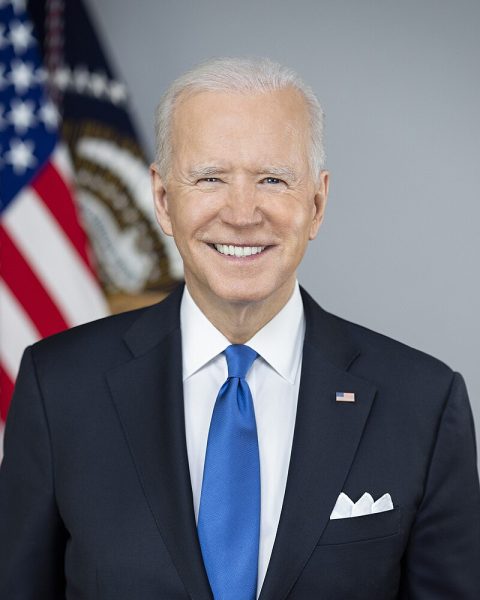Myanmar coup puts country in turmoil

Protesters in Bangkok, Thailand take a stand against the military turmoil between the NLD and military forces.
On Feb. 1, the military of the small southeast Asian country, Myanmar (also known as Burma to many) seized control over the democratically elected government. Leader Aung San Suu Kyi and her allies were detained with military force under alleged charges of election fraud, as army chief Min Aung Hlaing was established as the new leader of the country.
As 24 ministers and deputies of the National League of Democracy (NLD) political party were removed from their positions, Suu Kyi urged her citizens in a press release through the NLD, written briefly before she was taken into custody, to protest the coup. Protests began shortly after her written statement on the night of Feb. 2, as citizens of Yangon, the largest city in Myanmar, engaged in auditory protest by honking vehicle horns or banging metal pans.
In the following week, new leader Min Aung Hlaing told his new administration in his first government meeting that the coup was inevitable, alluding to the idea that it was a necessary course of action against the Suu Kyi regime.
The source of the conflict can be traced back to 1948, the year in which Burma achieved independence from Britain. The Burmese people founded their own constitutional government, where U Nu was raised as the first prime minister of Myanmar. The movement to independence that led to this transfer in power was led by Aung San, the father of Aung San Suu Kyi.
This was the start of turmoil between the NLD and the military regime to remain governmentally dominant that is still present today. Aung San Suu Kyi repeatedly emerged victorious as a national democratic icon among pro-democratic protests, winning the 1990 elections with a landslide victory, which the former military regime refused to recognize as valid. 1990 was the beginning of Suu Kyi’s intimidation by the Myanmar military, who forced her into house arrest multiple times. She was finally elected as state chancellor in 2015, and reelected in 2020—the source of conflict within this coup.
Suu Kyi’s re-election was contested by the pro-military Union Solidarity and Development Party (USDP)claimed that the election was fraudulent. On Jan. 26, 2021, its spokesperson, Zaw Min Tun, hinted at an incoming coup.
“We will take action according to the constitution and existing laws if they don’t resolve the issue,” he said, referring to the concerns of the military on election fraud. “We do this because we want a strong democratic system,” he added later on.
Though Myanmar is no stranger to political turmoil, its people are no stranger to protest as well. In the weeks following the coup, 70 hospitals have stopped work to protest the military regime. Additionally, many have begun wearing red ribbons to symbolize their solidarity. Teachers and government workers soon joined the cause, refusing to work for a non-democratic government.
However, the new military regime also stayed active during this time, raiding NLD offices to procure documents and laptops. Suu Kyi’s detainment was extended until Feb. 15 under charges of allegedly finding illegally imported hand-held radios in her residence, refusing to allow her to meet any lawyers. Furthermore, bans on the usage of Facebook, Twitter, Instagram, Messenger (Facebook’s messaging app) and WhatsApp were put in place under the pretense of “stability.” Internet access was briefly cut, though later restored.
Despite these restrictions, reports of violence are constantly reaching families and news sources overseas. Protests in Myanmar have been reported to end in violent altercations involving rubber bullets fired by military personnel, as well as water cannons. Though many international businesses have attempted to deliver economic consequences to the military regime, the violence remains ongoing, reports frequently unclear.










